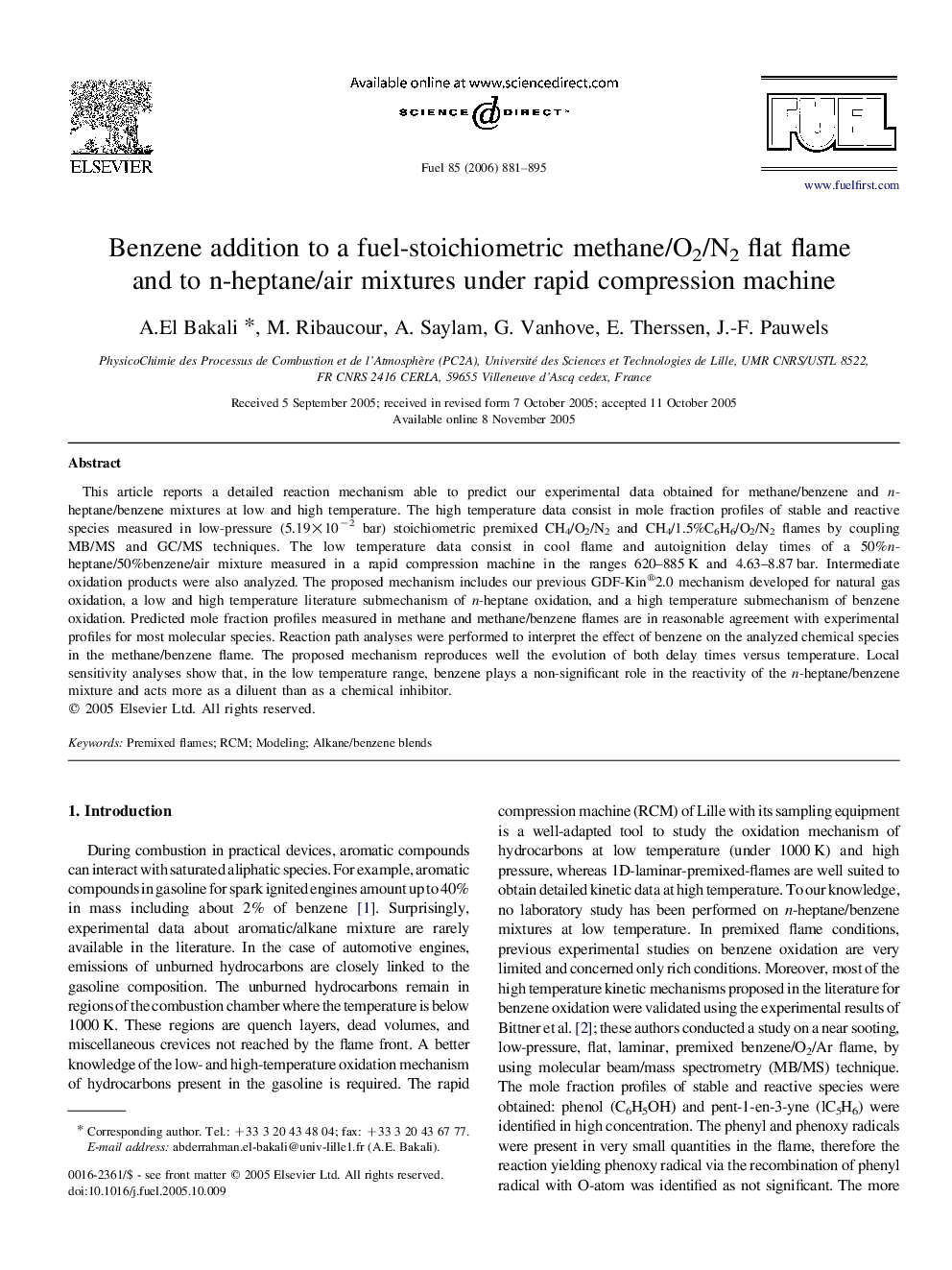| Article ID | Journal | Published Year | Pages | File Type |
|---|---|---|---|---|
| 208653 | Fuel | 2006 | 15 Pages |
This article reports a detailed reaction mechanism able to predict our experimental data obtained for methane/benzene and n-heptane/benzene mixtures at low and high temperature. The high temperature data consist in mole fraction profiles of stable and reactive species measured in low-pressure (5.19×10−2 bar) stoichiometric premixed CH4/O2/N2 and CH4/1.5%C6H6/O2/N2 flames by coupling MB/MS and GC/MS techniques. The low temperature data consist in cool flame and autoignition delay times of a 50%n-heptane/50%benzene/air mixture measured in a rapid compression machine in the ranges 620–885 K and 4.63–8.87 bar. Intermediate oxidation products were also analyzed. The proposed mechanism includes our previous GDF-Kin®2.0 mechanism developed for natural gas oxidation, a low and high temperature literature submechanism of n-heptane oxidation, and a high temperature submechanism of benzene oxidation. Predicted mole fraction profiles measured in methane and methane/benzene flames are in reasonable agreement with experimental profiles for most molecular species. Reaction path analyses were performed to interpret the effect of benzene on the analyzed chemical species in the methane/benzene flame. The proposed mechanism reproduces well the evolution of both delay times versus temperature. Local sensitivity analyses show that, in the low temperature range, benzene plays a non-significant role in the reactivity of the n-heptane/benzene mixture and acts more as a diluent than as a chemical inhibitor.
